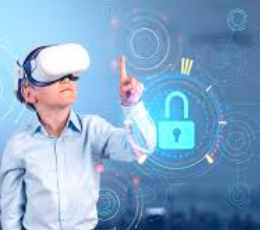Bringing Learning to Life: How VR is Transforming Online Education
Online learning platforms have come a long way from simple video lectures and quizzes. One of the most exciting developments in digital education is the integration of Virtual Reality (VR). By blending immersive technology with education, VR is changing the way students engage with content, making learning more interactive, memorable, and impactful.
What Is VR in Online Learning?
Virtual Reality allows learners to experience lessons as if they were physically present in a different place or environment. Instead of just reading about ancient Rome or watching a science experiment, students can walk through a Roman marketplace or mix virtual chemicals in a lab, all from the comfort of their homes.
These experiences are made possible through VR headsets and specially designed apps or platforms that simulate real-world or fantasy environments. The goal is to make learning more active, less passive, and deeply engaging.
Benefits of VR-Enhanced Online Platforms
-
Hands-On Practice in Safe Settings
Medical students can perform virtual surgeries, engineering students can build models, and language learners can have simulated conversations in foreign cities—all in risk-free environments. -
Better Retention and Focus
Studies suggest immersive experiences improve memory and attention. VR helps students stay focused because the learning environment feels real and exciting. -
Global Access to Enriched Learning
Not everyone has access to a planetarium, art gallery, or professional science lab. VR brings these experiences to anyone with a headset and internet connection, breaking barriers in education. -
Increased Motivation
When learning feels like an adventure, motivation follows. VR can turn a history class into a time-travel expedition or a biology lesson into a rainforest trek.
Popular Platforms Using VR for Learning
Several online platforms are already incorporating VR into their course offerings:
-
Engage – Used for virtual classrooms, presentations, and immersive experiences in science, space, and humanities.
-
VictoryXR – Offers VR content aligned with school curricula, including dissection labs and historical explorations.
-
Prisms of Reality – Focused on STEM subjects, this platform turns abstract math problems into real-world simulations.
-
Labster – Specializes in virtual science labs that allow learners to experiment freely without risk or expensive equipment.
Who Benefits Most from VR in Learning?
While VR can enrich almost any subject, it’s especially helpful in areas like:
-
Science and Engineering – Simulations bring abstract concepts to life.
-
Healthcare Training – Practice procedures in lifelike medical environments.
-
History and Geography – Explore past civilizations or travel the globe virtually.
-
Language Learning – Interact in contextually rich virtual settings to improve fluency.
Challenges and Considerations
Despite its promise, VR in education isn’t without challenges. Hardware costs, accessibility issues, and the need for strong internet connections can be limiting. However, as technology advances and becomes more affordable, more learners will be able to benefit from these immersive tools.
Looking Ahead
VR is not replacing traditional online learning but enhancing it. As more institutions and platforms invest in VR content, students around the world can expect to see learning that feels more like exploration and less like memorization.
For those looking to level up their online learning journey, platforms that offer VR experiences are opening a new world—one you can step into, interact with, and learn from in unforgettable ways.






